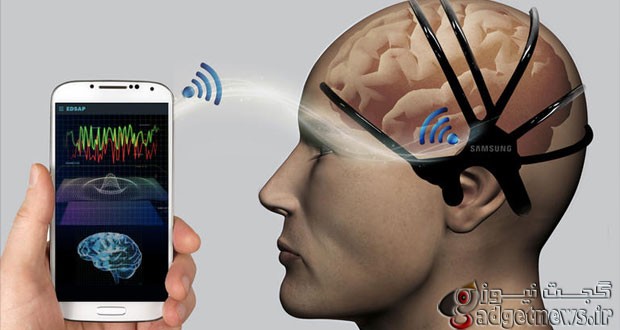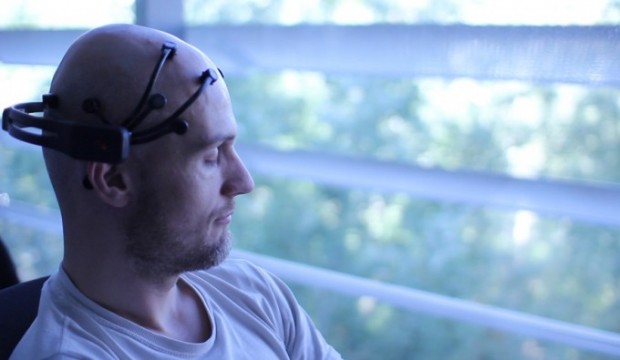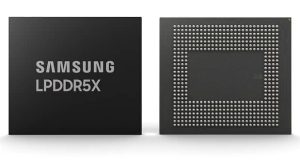گروهی از مهندسان در آزمایشگاه خلاقیت سامسونگ، موفق به طراحی یک دستگاه پوشیدنی به همراه یک اپلیکیشن شدهاند که میتواند با رصد امواج مغزی، احتمال وقوع سکته مغزی را پیشبینی کند. بسته حسگر و الگوریتم تشخیص فوری (Early Detection Sensor & Algorithm Package – EDSAP) امکان تشخیص سکته را از طریق امواج مغزی فراهم میآورد.
این بسته با مجموعهای از حسگرها و یک الگوریتم ویژه، به افراد این امکان را میدهد تا با داشتن یک تلفن هوشمند یا تبلت، ضربان الکتریکی یا امواج مغزی را رصد کرده و به این ترتیب احتمال نزدیک بودن سکته را ارزیابی کنند. هدف از این طرح، ایجاد امکان هشدار قبلی است، به گونهای که افراد در معرض خطر بتوانند برای معاینات مفصلتر به پزشک مراجعه نموده و از نتایج تأسفبار و بالقوه وقوع سکته جلوگیری کنند.
سههون لیم مدیر این پروژه تحقیقاتی میگوید: «ما از عصبشناسان درباره امکانپذیر بودن این طرح سؤال کردیم. آنها عملی شدن آن را رد کردند، با این وجود ما میخواستیم آن را امتحان کنیم. امروزه سکته موضوع نگرانکنندهای است. نگاهی به آمار سازمان جهانی بهداشت نشان میدهد که سالانه 15 میلیون نفر در جهان دچار سکته میشوند و 66 درصد این موارد به مرگ یا ازکارافتادگی جسمی دائم میانجامد. با توجه به پیر شدن جمعیت در بسیاری از کشورها، باید به این عارضه نگاه جدی داشت.»
نوآوری جدید سامسونگ به این صورت عمل میکند که حسگرهای EDSAP که از طریق یک هدست که روی سر فرد گذاشته میشود، اطلاعات امواج مغزی را جمعآوری و به یک اپلیکیشن موبایل منتقل میکند. این اپلیکیشن با استفاده از الگوریتمهای طراحی شده، امواج مغزی را تحلیل و نهایتاً میزان احتمال یک سکته را تخمین میزند. تمامی این فرآیند ظرف شصت ثانیه انجام میشود. علاوه بر این، EDSAP با کنترل طولانیتر امواج مغزی میتواند با تکیه بر توانایی تحلیلی خود، اطلاعات بیشتری در مورد سلامت عصبی افراد همچون استرس، اضطراب و الگوی خواب ارائه دهد.
سئونگ بونگ هونگ متخصص اعصاب در مرکز بهداشتی سامسونگ در سئول و مشاور پزشکی پروژه EDSAP میگوید: «ما در مرکز بهداشتی سامسونگ معتقدیم که میتوان کاربردهای EDSAP را توسعه داد و از آن در دیگر مسائل مربوط به سلامت عصبی، همچون افسردگی، استفاده نمود. البته تا نهایی شدن EDSAP گامهای دیگری نیز باید برداشته شود و به طور کامل مورد آزمایشهای کلینیکی قرار گیرد.»
حسگرهای EDSAP در مقایسه با دیگر حسگرهای امواج مغزی در بازار که معمولاً برای کنترل وسایل و نه مقاصد بهداشتی به کار میروند، از جهات مختلفی بیهمتا هستند. اول به دلیل آن که حسگرهای EDSAP بسیار سریعتر از تجهیزات مانیتور امواج مغزی در بیمارستانها که حدود ۱۵ دقیقه وقت میگیرند، عمل میکنند. دوم به این جهت که حسگرهای EDSAP میتوانند با استفاده از مواد سوپرهادی لاستیک مانندی که لیم و اعضای تیم او کشف کردند، جزئیات کاملتری از امواج مغزی را ثبت نمایند. سوم این که نصب این حسگرها نیز آسان است و دیگر نیازی نیست محلول نمک به موها مالیده شود و بدین ترتیب ابعاد ناخوشایند روشهای قبلی اسکن امواج مغزی حذف میشود. از آن مهمتر، با توجه به مواد لاستیک مانند استفاده شده، حسگرهای EDSAP را میتوان به اشکال کوچکتر و متنوعتر شبیه به وسایل مورداستفاده روزمره ساخت. حسگرهای EDSAP فعلاً به شکل یک هدست طراحی شدهاند، ولی میتوان آنها را در انتهای سنجاقسر و یا دستههای عینک نیز نصب نمود و به این ترتیب به استفادهکنندگان امکان داد تا بدون آن که ظاهر عجیبی داشته باشند، امواج مغزی خود را برای مدت طولانیتری ضبط کنند.
منبع : CNet
Samsung prototypes brainwave-reading wearable stroke detector
Samsung prototypes brainwave-reading wearable stroke detector
A group of Samsung engineers has come up with a system that monitors your brain, to warn you of an impending stroke.
A group of Samsung engineers have come up with a plan to harness the power of your phone or tablet to warn you of an impending stroke. By monitoring your brainwaves the system would detect the early signs of a stroke, and could one day be built into your glasses to keep you safe all the time.
A stroke happens when the blood supply to part of your brain is cut off by a clot or damaged by a bleed, which causes brain cells in the affected area to die. According to the World Health Organisation, 15 million people across the world suffer from a stroke each year. Around 66 per cent of those people die or are left with permanent physical disabilities.
To combat the problem, five Samsung engineers have come up with a prototype system called Early Detection Sensor & Algorithm Package (EDSAP). There are two parts to the system: a headset, covered in sensors that record electrical impulses in the brain; and a mobile app, in which an algorithm analyses the brainwaves and, in less than a minute, determines the likelihood of a stroke.
The project started two years ago when a group of Samsung smartphone and washing machine engineers fancied a change and banded together to look at the problem of stroke. Despite doctors being “dismissive”, the engineers decided to take the project to Samsung’s Creativity Lab, or C-Lab. C-Lab helps Samsung employees turn creative or quirky ideas into potentially commercial products.
The Samsung team reckon they’ve improved on current medical methods with the headset, which is made from a conductive and comfortable rubber-like material that doesn’t require a saline solution rubbed onto your head.
In theory, the rubber material is versatile enough to make other things instead of a headset — for example, sensors could be put into hairpins or eyeglasses so you can wear them all the time and monitor your brainwaves constantly.
As well as providing an early warning about the possibility of a stroke, the system can analyse stress and sleep patterns. The principles of EDSAP could also potentially be used to monitor electrocardiograms — heartbeats — so the team is looking at how the technology could be used to monitor your heart.
However, EDSAP is still at the very earliest stages, with clinical trials among the steps to be taken before EDSAP technology is ready for the public.
“Stroke is not inevitable,” says Joe Korner, Director of External Affairs at the Stroke Association. “In many cases there are simple steps people can take to reduce their risk of stroke such as keeping their blood pressure under control, eating a balanced diet and exercising more. Anyone with any concerns about their risk of stroke should have a chat with their GP.”
When someone has a stroke it’s vital they receive emergency medical treatment as soon as possible. “If you think someone is having a stroke,” advises Korner, “you can use the FAST test to recognise the signs:
Face: Can the person smile? Has their mouth or eye drooped?
Arms: Can the person raise both arms?
Speech: Can the person speak clearly and understand what you say?
Time to call 999.”
If you want to know more about stroke, protecting yourself and your loved ones, or living with the effects, find out more from UK charity Stroke Association, the US National Stroke Association or Australia’s Stroke Foundation.
 گجت نیوز آخرین اخبار گجتی و فناوری های روز دنیا
گجت نیوز آخرین اخبار گجتی و فناوری های روز دنیا 







